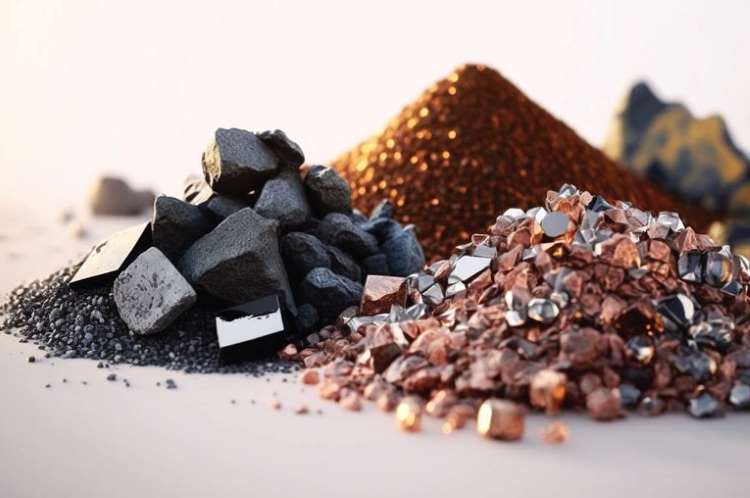
Critical minerals are essential for developing various high-tech industries, including renewable energy, electronics, defence, and telecommunications. These minerals, such as rare earth elements (REEs), lithium, and cobalt, are crucial for producing batteries, magnets, and other advanced materials. They are vital for renewable energy technologies like wind turbines and solar panels, which are essential for India’s transition to a green economy.
The rise of electric vehicles (EVs) heavily depends on lithium-ion batteries, which require lithium, cobalt, and nickel. Additionally, rare earth elements are indispensable in producing high-performance magnets used in various applications, from consumer electronics to defence systems.
READ I Hasina’s exit: Political crisis in Bangladesh threatens regional stability
A critical mineral strategy
Much like the poignant parable of Gautam Buddha teaches us the importance of focused effort over scattered attempts, we must apply the same principles for the exploration and processing of critical minerals. Buddha’s story of a man who dug numerous shallow pits in search of water, rather than one deep well, serves as an allegory for the current global approaches to securing critical minerals. These minerals are indispensable for technological advancements, especially in clean energy and decarbonisation. India must focus on three primary strategies: exploring new mines inside and outside our country, extracting by-products from existing operations, and urban mining.
Auction of critical minerals: The first approach involves auctioning new mining sites to tap into previously untouched resources. However, it comes with challenges such as high bid premiums and economic viability concerns. For instance, iron ore average bids are more than 110%, raising questions about long-term sustainability. While auctions are likely to remain, the modalities must be refined to ensure that mining operations are economically viable and contribute effectively to the industry.
Extracting by-products from existing mines: The second approach focuses on extracting additional minerals from the waste of current mining operations as well as co-products/by-products from primary minerals. An example is the potential recovery of nickel from the overburden produced during the mining of chromite ore in Odisha’s Sukinda area. This method echoes Buddha’s teaching of maximising yield from a single, well-dug pit, emphasising efficiency and resourcefulness. By leveraging existing resources more effectively, mining operations can yield significant quantities of critical minerals without the need for entirely new mining activities. This approach can significantly reduce environmental impact by minimising waste and promoting the efficient use of resources.
Urban mining strategy: The third approach, urban mining, involves recycling materials from used appliances to extract valuable minerals. This method not only taps into an alternative source of critical minerals but also supports environmental sustainability. However, it requires significant investment in skills and technology to efficiently identify and segregate minerals from various devices. Urban mining represents a forward-thinking strategy that aligns with global sustainability goals, reducing the need for traditional mining operations and minimising environmental impact.
Policy implications and incentives
To harness these approaches effectively, supportive policy measures are crucial. It is important to understand the revenue outlay from a mine on the co-product in terms of a mine won through an auction with a bid premium. Proper incentivisation can lead to more efficient mining practices and better resource utilisation, aligning with the principles highlighted by Buddha’s parable. Additionally, ensuring fair and consistent policies will encourage investment and innovation in the sector.
Policies should address the economic viability of high bid premiums, as these can deter participation or lead to unsustainable mining practices. Establishing clear guidelines and support mechanisms can help create a balanced approach that benefits both the industry and the economy. Guided by the National Mineral Policy 2019, which states that minerals are valuable natural resources essential raw materials for the core sectors of the economy, the Indian Government has taken several steps to secure critical minerals.
This includes advocating policies to ensure the availability of critical minerals by encouraging exploration and investment in mining and processing technologies and emphasising sustainable mining practices and the development of a robust supply chain.
Additionally, through the issuance of exploration licenses for deep-seated and critical minerals, private organisations are encouraged to expedite the exploration of critical minerals. The delisting of six minerals, including lithium, from the list of atomic minerals has made it easier for the private sector to explore and mine these resources. The start of the auction for critical mineral blocks was also a forward move by the government.
Through strategic collaborations with other countries, India has entered into partnerships with countries rich in critical minerals. For instance, agreements with Australia and Canada aim to secure a steady supply of critical minerals through joint ventures and technology transfers.
Further, India is exploring its mode of association over critical minerals directly through the Ministry or through KABIL with countries like Brazil, DR Congo, Chile, Argentina, and Mongolia. An MoU has also been signed for the exploration of lithium in Argentina. India and Russia are deliberating on the Eastern Maritime Corridor (Chennai-Vladivostok Corridor), which could help direct Mongolian minerals to India.
Broader context and future directions
Electric vehicles and renewable energy infrastructure require significantly more minerals to build than their conventional counterparts. This increased demand necessitates robust environmental, social, and governance (ESG) frameworks to manage the associated hazards and pollution of mining and processing critical minerals. Furthermore, the transition to clean energy and decarbonisation will only heighten the demand for these minerals. Therefore, approaches like urban mining and efficient by-product extraction will gain more traction.
Additionally, enhancing skill sets among workers is imperative for the successful implementation of urban mining strategies. Workers need to discern the mineral content in appliances from different eras, which requires specialised knowledge and training.
Several challenges lie ahead for our country to source and process critical minerals, such as technological gaps where processing often requires sophisticated technologies and expertise that India currently lacks, environmental concerns as mining and processing can have significant environmental impacts, and the need for adequate infrastructure for mining, transportation, and processing.
To stay ahead in the competitive landscape of critical minerals and to create an Atmanirbhar Bharat (Self-Reliant India), we must take a few steps forward from the current stage. Investing in R&D to develop indigenous technologies for the efficient processing of critical minerals is crucial. Collaboration with global institutions and private sector participation can accelerate this process, including the supply chain.
Training and educating the workforce through skill development programs in advanced mining and processing techniques are necessary to bridge the technological gap. A robust regulatory framework that balances economic growth with environmental sustainability is essential. Streamlining approval processes and ensuring compliance with environmental standards can promote responsible mining practices. Encouraging public-private partnerships can bring in the necessary investment and expertise.
The author is Executive Incharge, Ferro Alloys and Minerals Division, Tata Steel Ltd. The views expressed in this article are of the author and not necessarily those of the company he is associated with.

